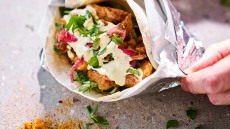VIDEO: Grieg Seafood on ‘diving’ into the ocean to feed growing populations
The world’s oceans cover 71% of the planet, yet marine food contributes just 2% to the human food supply.
With growing populations estimated to reach 8.6bn by 2030, and 9.8bn by 2050, many in the seafood sector believe we should be looking underwater to boost food production.
Grieg Seafood ASA is of this mindset. “I think we have to dive into the ocean…to produce more food,” the company’s Public Relations Manager Roger Pedersen told FoodNavigator on a recent visit to Norway.
More seafood, sustainably
Grieg Seafood specialises in Atlantic Salmon farming. With facilities in Finnmark and Rogaland in Norway, British Columbia in Canada, and Shetland in the UK, Grieg has an annual production target of 100,000 tonnes gutted weight.
The company takes sustainability seriously, we were told. By 2030, Grieg aims to have reduced its CO₂ emissions per kilo by 30% - using 2017 as a base year – and the company is ‘working actively’ to achieve Aquaculture Stewardship Council (ASC) certification across all its sites.
The ASC standards requires businesses to monitor their organic emissions more often and prevents them from using copper in their net coatings. Further, companies must lower sea lice numbers in the critical period for wild salmon, and ensure full traceability of sustainable raw materials, to achieve certification. Of Grieg’s 15 sites, just five are still pending certification.
What the salmon eat also contributes to Grieg’s overall environmental footprint. The company told this publication its feed is largely made up of plant-based ingredients. A representative sample includes guar, beans, fish oil, soy, fishmeal wheat, and rapeseed.
While some feed manufacturers are introducing insects into the mix, to reduce reliance on the planet’s limited natural resources, production is not yet at the scale required by industry.
Looking forward
Grieg’s focus on sustainability fits in with growing consumer interest for ethically produced seafood. According to a survey commissioned by the ASC last summer, there is ‘widespread concern’ about the environmental and social impacts of food.
Of the 7,000 seafood consumers surveyed across Germany, France, the Netherlands, China, Japan, Canada, and the US, 71% said that supermarkets’ or brands’ claims about sustainability should be clearly labelled by an independent organisation.
And sixty-three percent said they wanted to hear more from brands about the sustainability of their products.
Grieg has established a 2000-2025 strategy for sustainable salmon farming, focusing on: global growth, cost leadership, and value chain repositioning. This includes reaching a 150,000-tonne harvest by 2025, sustainably.
Watch the video for the full interview with Grieg Seafood’s Roger Pedersen.
















